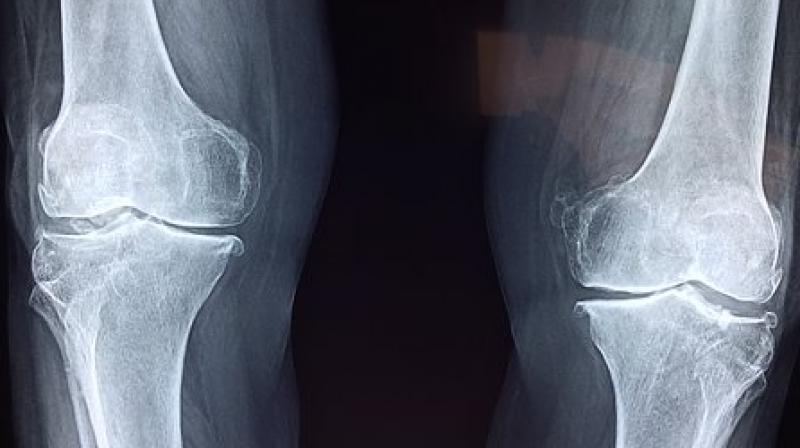Everything you need to know about psoriatic arthritis

Psoriatic arthritis causes inflammation in and around the joints. It usually affects people who already have psoriasis, a skin condition that causes a red, silver crusted scaly rash, especially on the elbows, knees, back, buttocks, groins and scalp. In women, it can occur underneath the surface of the breasts.
However, some people develop the arthritis symptoms before psoriasis; while others will never develop the skin condition. In most people diagnosis of Psoriatic arthritis is delayed as they are focussing more on the cosmetic aspect and lack of awareness regarding the association of skin and joints.
What are the symptoms?
Symptoms of psoriatic arthritis can include:
• A red, scaly rash (psoriasis)
• Swollen, stiff and painful joints
• Sausage-like swelling of fingers ortoes (dactylitis)
• Thickening, discoloration and pitting of the nails
• Pain and swelling at the back of the heel
• Fatigue.
How is it diagnosed?
Your doctor will examine you and ask if there’s a family history of psoriasis. The skin rash can be very subtle and does not correlate with the severity of the joint disease. There are no specific blood tests available for confirming the diagnosis - it is a clinical diagnosis, blood tests help to exclude other causes like gout which can affect the toes. You may also have magnetic resonance imaging (MRI) scans, ultrasound scans, and X-rays which can help to confirm the diagnosis.
What causes Psoriatic arthritis?
The arthritis and skin condition are both caused by inflammation. The processes of inflammation are very similar in the skin and the joints. We don’t yet know exactly what triggers the inflammation in psoriatic arthritis but is a combination of genetic and environmental factors that lead to the rapid turnover of skin cells resulting in patches of psoriasis.
Does psoriatic arthritis affect other organs?
Psoriatic arthritis doesn’t usually affect major organs such as the liver or lungs.
However, you may be more likely to develop a painful red eye. If this affects you, it’s important not to ignore it. These symptoms may be caused by a condition called uveitis, also known as iritis, which is inflammation at the front of the eye.
Treatment of psoriatic arthritis
The treatment ideally should be jointly managed by a skin specialist and rheumatologist. In most cases treatment given for the skin works for joints and vice versa. The skin specialist will initially manage the skin with topical treatment which continues with the systemic treatment, light therapy, and vitamin A. Pain killers help relieve symptoms of mild joint pains while awaiting confirmation of diagnosis. Steroids could be used as an initial treatment either orally or injecting either intramuscular into joint areas affected.
There are disease modifying drugs which treat both the skin and joints. For severe cases biologic drugs are now available which work effectively.
Likewise, in damaged joints due to long-standing untreated arthritis, surgery may be recommended after disease control.
Role of exercise and diet
It is very important to include exercise as part of the routine in daily life especially when suffering from joint problems as it can help the joints to remain flexible and functional. Furthermore, it is advisable to eat a healthy diet including lots of fresh fruits and vegetables, oily fish and avoid junk food.
Take-away message: Patients with psoriatic arthritis are at more risk for cardiovascular problems including obesity, high blood pressure, and high cholesterol. It is advisable for regular screening by your doctor for the above conditions and early treatment for the same.

